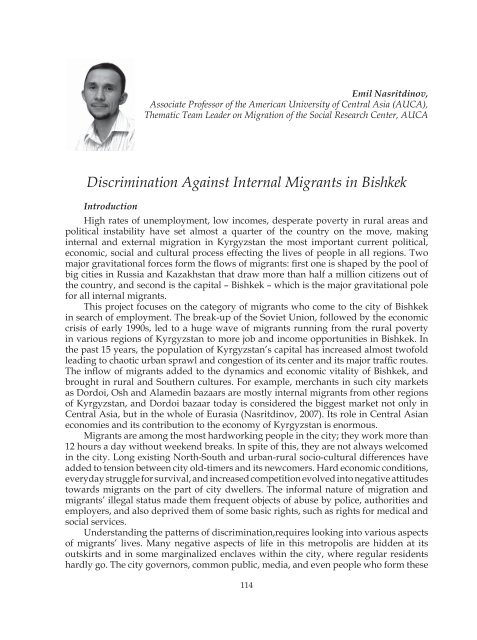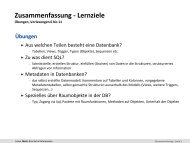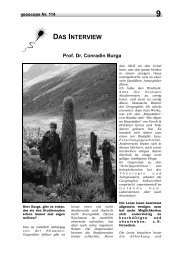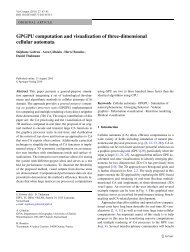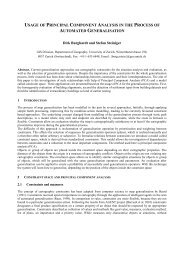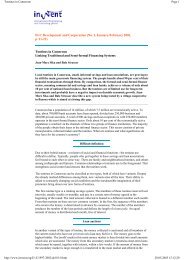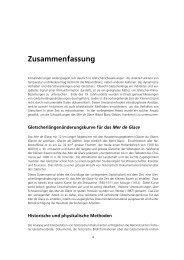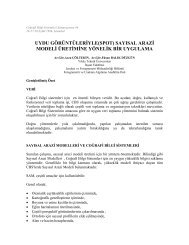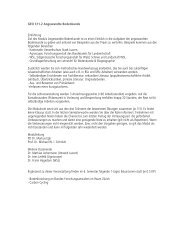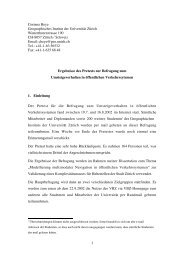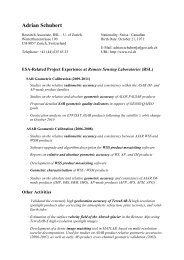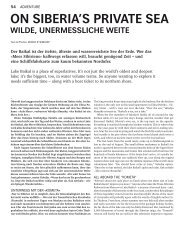KYRGYZSTAN TODAY Policy briefs on - Department of Geography
KYRGYZSTAN TODAY Policy briefs on - Department of Geography
KYRGYZSTAN TODAY Policy briefs on - Department of Geography
You also want an ePaper? Increase the reach of your titles
YUMPU automatically turns print PDFs into web optimized ePapers that Google loves.
Emil Nasritdinov,<br />
Associate Pr<strong>of</strong>essor <strong>of</strong> the American University <strong>of</strong> Central Asia (AUCA),<br />
Thematic Team Leader <strong>on</strong> Migrati<strong>on</strong> <strong>of</strong> the Social Research Center, AUCA<br />
Discriminati<strong>on</strong> Against Internal Migrants in Bishkek<br />
Introducti<strong>on</strong><br />
High rates <strong>of</strong> unemployment, low incomes, desperate poverty in rural areas and<br />
political instability have set almost a quarter <strong>of</strong> the country <strong>on</strong> the move, making<br />
internal and external migrati<strong>on</strong> in Kyrgyzstan the most important current political,<br />
ec<strong>on</strong>omic, social and cultural process effecting the lives <strong>of</strong> people in all regi<strong>on</strong>s. Two<br />
major gravitati<strong>on</strong>al forces form the flows <strong>of</strong> migrants: first <strong>on</strong>e is shaped by the pool <strong>of</strong><br />
big cities in Russia and Kazakhstan that draw more than half a milli<strong>on</strong> citizens out <strong>of</strong><br />
the country, and sec<strong>on</strong>d is the capital – Bishkek – which is the major gravitati<strong>on</strong>al pole<br />
for all internal migrants.<br />
This project focuses <strong>on</strong> the category <strong>of</strong> migrants who come to the city <strong>of</strong> Bishkek<br />
in search <strong>of</strong> employment. The break-up <strong>of</strong> the Soviet Uni<strong>on</strong>, followed by the ec<strong>on</strong>omic<br />
crisis <strong>of</strong> early 1990s, led to a huge wave <strong>of</strong> migrants running from the rural poverty<br />
in various regi<strong>on</strong>s <strong>of</strong> Kyrgyzstan to more job and income opportunities in Bishkek. In<br />
the past 15 years, the populati<strong>on</strong> <strong>of</strong> Kyrgyzstan’s capital has increased almost tw<strong>of</strong>old<br />
leading to chaotic urban sprawl and c<strong>on</strong>gesti<strong>on</strong> <strong>of</strong> its center and its major traffic routes.<br />
The inflow <strong>of</strong> migrants added to the dynamics and ec<strong>on</strong>omic vitality <strong>of</strong> Bishkek, and<br />
brought in rural and Southern cultures. For example, merchants in such city markets<br />
as Dordoi, Osh and Alamedin bazaars are mostly internal migrants from other regi<strong>on</strong>s<br />
<strong>of</strong> Kyrgyzstan, and Dordoi bazaar today is c<strong>on</strong>sidered the biggest market not <strong>on</strong>ly in<br />
Central Asia, but in the whole <strong>of</strong> Eurasia (Nasritdinov, 2007). Its role in Central Asian<br />
ec<strong>on</strong>omies and its c<strong>on</strong>tributi<strong>on</strong> to the ec<strong>on</strong>omy <strong>of</strong> Kyrgyzstan is enormous.<br />
Migrants are am<strong>on</strong>g the most hardworking people in the city; they work more than<br />
12 hours a day without weekend breaks. In spite <strong>of</strong> this, they are not always welcomed<br />
in the city. L<strong>on</strong>g existing North-South and urban-rural socio-cultural differences have<br />
added to tensi<strong>on</strong> between city old-timers and its newcomers. Hard ec<strong>on</strong>omic c<strong>on</strong>diti<strong>on</strong>s,<br />
everyday struggle for survival, and increased competiti<strong>on</strong> evolved into negative attitudes<br />
towards migrants <strong>on</strong> the part <strong>of</strong> city dwellers. The informal nature <strong>of</strong> migrati<strong>on</strong> and<br />
migrants’ illegal status made them frequent objects <strong>of</strong> abuse by police, authorities and<br />
employers, and also deprived them <strong>of</strong> some basic rights, such as rights for medical and<br />
social services.<br />
Understanding the patterns <strong>of</strong> discriminati<strong>on</strong>,requires looking into various aspects<br />
<strong>of</strong> migrants’ lives. Many negative aspects <strong>of</strong> life in this metropolis are hidden at its<br />
outskirts and in some marginalized enclaves within the city, where regular residents<br />
hardly go. The city governors, comm<strong>on</strong> public, media, and even people who form these<br />
114


